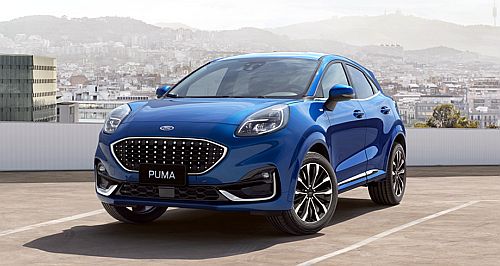Make / Model Search
News - Ford - Puma - BEVFord Puma BEV confirmed for AustraliaBlue Oval will have one of the most compact electric SUVs in Oz before the end of 202418 Apr 2023 By TONY O'KANE THOUGH Ford Australia will be giving the Escape an early retirement at the end of this year, the company has announced that it will be bolstering its Puma light SUV family with an all-electric entrant – which will make Ford one of the few companies to have a pure EV compact car on sale in Australia.
“When it comes to our story on electrification, another entrant that we will be adding is the Puma,” said Ford Australia president and CEO Andrew Birkic.
“We’ll be bringing in a BEV (battery electric vehicle) Puma. We’ve been making some decisions around our line-up and we believe that is the right investment for us.
“Puma has done well, it continues to win awards, so we know that’s certainly an important play for us in the future.”
Mr Birkic wouldn’t be drawn on specifics like performance, range, pricing or timing. However, the company has committed to launching the Puma EV here before the end of 2024.
While specifications are still under wraps, the recent reveal of a battery-powered version of the Puma’s commercial van twin, the E Transit Courier gives some clues.
Both are built on Ford’s B2E FWD compact car platform at the same Romanian assembly plant, so powertrain commonality between the two is a reasonable assumption to make.
Ford has confirmed a 100kW/290Nm single-motor powertrain for the E Transit Courier, and while battery specs are still unknown, Ford says it will be able to charge from 10 to 80 per cent in under 35 minutes on a 100kW charger.
A full charge on an 11kW home charger takes around 5.7 hours as well, leading some to speculate that the Puma EV’s battery capacity will fall into the 50-60kWh realm – which is right where the BYD Atto 3 sits.
As for range, expect around 350km on a single charge at the low end. The Atto 3’s 49kWh variant delivers a WLTP claim of 345km on a single charge, and we’d expect similar performance from an electrified Puma at that energy level.
Measuring slightly smaller than the MG ZS but notably longer than the Mini Cooper SE, the Puma EV’s price tag will surely play a significant role in whether it sinks or swims.
The Australian Dollar is currently trending down against the Romanian Lei after having improved its position between 2020 and the start of this year and given the lack of an alternative source for the Puma a competitive price in Australian showrooms may be hard to secure as a result.
With even the Chinese-made BYD Atto 3 Standard range now retailing at $48,011, a sub-$50K RRP for Ford’s Euro-sourced electric compact SUV could be a tough ask indeed.
With the current combustion-powered Puma line-up spanning from $30,840 for the Titanium and rising to $36,390 for the ST-Line V, there is scope for an all-electric version to sneak in under the $50K barrier – but only just, considering most vehicles with all-electric variants tend to apply a $15-20K premium for the electron-burner.
Ford Australia’s strategy has yet to be made clear.  Read more |
Click to shareFord articlesResearch Ford Motor industry news |












Facebook Twitter Instagram